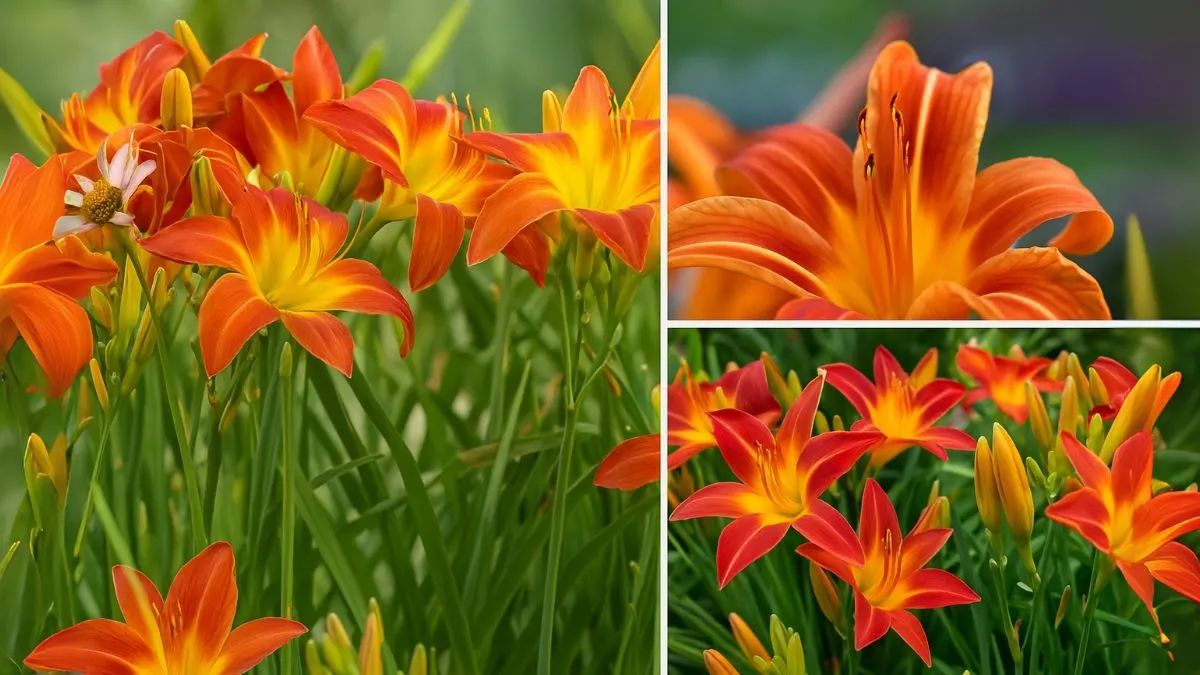If you’ve ever admired the bright, trumpet-shaped blooms of a daylily, you might have assumed it’s just another type of lily. But here’s the truth: No, daylilies are not “true lilies.” Despite the resemblance, a daylily and a true lily aren’t the same flower.
When I first started gardening, I too fell for this misconception. After planting both in my backyard in Toronto, I quickly realized their differences—especially in growth patterns and care requirements.
So, let’s uncover the mystery and answer the question: what really makes daylilies different?
Daylilies vs. True Lilies: The Scientific Distinction

The biggest difference lies in their classification.
- True lilies belong to the Lilium genus, part of the lily family (Liliaceae).
- Daylilies belong to the Hemerocallis genus, which is an entirely separate family (Asphodelaceae).
This means, scientifically speaking, Think Daylilies Are Real Lilies? Here’s the Shocking Truth—they’re not even closely related!
Differences in Growth and Structure
While both flowers look similar at first glance, their growth habits are different:
Feature |
Daylilies (Hemerocallis) |
True Lilies (Lilium) |
Root System |
Fibrous roots with fleshy tubers |
Bulbs with scales |
Stem |
Leaves emerge from the crown, no true stem |
Upright stems with leaves along them |
Bloom Duration |
Each flower lasts just one day |
Flowers last several days |
Flowering Season |
Summer, often repeat blooming |
Summer, single seasonal bloom |
This table clearly shows that a daylily and a true lily aren’t the same flower at all.
Also Read: How to Grow Ageratum (Flossflower) for Vibrant Borders & Beds
Why Gardeners Love Daylilies
Even though they aren’t true lilies, daylilies are still incredibly popular:
- They’re hardy and adaptable in climates like Canada, the USA, and across the world.
- Each bloom lasts only one day, but the plant produces so many flowers that the display lasts for weeks.
- They require less maintenance than true lilies, thriving in almost any soil with enough sun.
When I planted them in partial shade near my patio, the vibrant orange and yellow flowers lit up the space. Their easy-care nature made them perfect for a busy gardener like me.
The Beauty of True Lilies
While daylilies have their charm, true lilies also deserve attention:
- Lilies grow from bulbs, producing tall stems topped with multiple blooms.
- Their flowers are long-lasting and often fragrant.
- They’re favorites in floral arrangements because of their elegance.
This contrast explains why No, daylilies are not “true lilies”—but both bring unique beauty to gardens.
Common Misconceptions
Here’s where confusion arises:
- Both plants have trumpet-shaped blooms in vibrant colors.
- Both are widely grown in North American and European gardens.
- Their names overlap—day*“lily”* vs. “lily”—causing endless mix-ups.
However, remember: Think Daylilies Are Real Lilies? Here’s the Shocking Truth—they only share a name, not a botanical family.
Also Read: China Doll Plant: A Stylish Evergreen for Modern Homes
Care Tips for Daylilies
If you’re planning to grow them, here’s a quick guide:
- Plant in full sun for best flowering.
- Water regularly, especially during blooming season.
- Divide clumps every 3–5 years to encourage fresh growth.
Their forgiving nature makes them one of the easiest perennials to grow in any region.
Care Tips for True Lilies
True lilies need slightly more attention:
- Plant bulbs in well-draining soil to avoid rot.
- Stake tall stems to prevent them from toppling over.
- Fertilize during the growing season for vibrant blooms.
While trickier than daylilies, their reward is unmatched elegance.
Personal Experience: Daylily vs. Lily
When I grew both side by side, the differences were obvious:
- The daylilies produced an explosion of short-lived blooms, perfect for brightening my summer garden.
- The true lilies stood tall and elegant, lasting longer and looking stunning in vases indoors.
Both had their place, but I learned to stop confusing them—their care and structure are simply too different.
Also Read: Why Aglaonema Evergreen Is the Perfect Indoor Plant for Beginners
The Final Verdict
To wrap it up:
- No, daylilies are not “true lilies.”
- A daylily and a true lily aren’t the same flower—they belong to completely different plant families.
- Think Daylilies Are Real Lilies? Here’s the Shocking Truth—their similarities are mostly visual, not botanical.
👉 Whether you’re drawn to the low-maintenance charm of daylilies or the elegance of true lilies, both have something special to offer your garden. Just don’t mistake one for the other!






